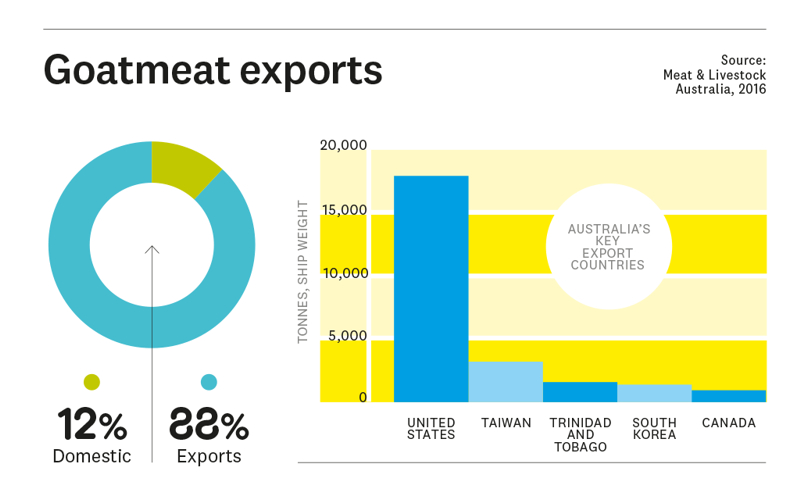With wild goat numbers in Australia exceeding 2.6 million, there are strong preconceptions about the animals eating everything and anything. However, Rick says if anything, the goats have helped the productivity of their land.
“The goats have cleaned out areas of woody weeds and scrub, like broad-leaf hopbush and turpentine, and now 80% of the woody weed problem is under control,” he says.
Rick adds that ground cover of perennial grasses like clover and medic is improved, providing that the stocking density is “sensible”. So despite popular belief, goats have helped improve their land. He says that goats also graze differently to sheep or cattle, in small mobs, which has proved easier on the country and resulted in less grazing pressure.
With a 250mm a year average rainfall, the environment is fairly dry, and stocking rate is the key. Explains Ross: “At the moment it is pretty dry here and we don’t have the feed to keep them [goats], but in a good year we keep most of the smaller ones.”
They sell 2,500 to 3,500 a week. The goats are purchased on a per-kilogram price from other stations, then mustered with the help of a small plane and motorbikes.
The nannies and billies are separated, classed into weights and either sold over-the-hooks directly to the abattoir – about 90% of the time – or turned out into paddocks to grow out. The business was previously just a depot, but the family now have enough country to keep some goats and grow them out to an average of about 30kg.
With the over-the-hooks price at about $5/kg carcase weight (cwt) currently, Ross says it is “good money”. Increasing world demand for goatmeat pushed domestic prices to a record $7.50/kg cwt in mid-2017, about four times the price of a decade ago.

Goatmeat is the most widely consumed meat in the world, despite contributing a relatively small part to domestic consumption of red meat. About 88% of Australia’s goatmeat production is exported, leaving only 12% to be consumed domestically.
The United States is the largest export market, taking 66% of the total volume, and according to Meat & Livestock Australia, demand for goatmeat from US consumers is increasing.
Rick believes that all Australian red meats have a strong export future. “What is critical is we can guarantee our product. I can’t see our markets going backwards any time soon, no-one has the quality of Australian goats.”
One advantage is that the Australian rangeland goats are thought of as being organically grown. “They are free-range, they aren’t lot-fed and they are
chemical-free,” says Ross.